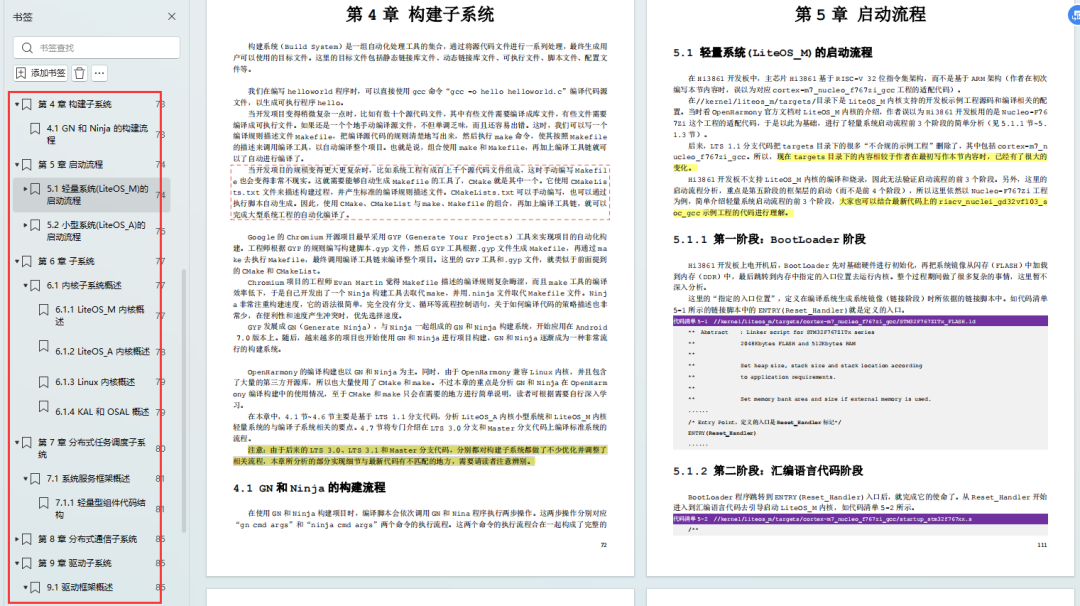往期知识点整理
步骤一:获取图片。
方法一:通过沙箱路径获取:
const context : Context = getContext(this);
const filePath : string = context.cacheDir + '/test.jpg';
方法二:通过沙箱路径获取图片的文件描述符:
const context = getContext(this);
const filePath = context.cacheDir + '/test.jpg';
const file : fs.File = fs.openSync(filePath, fs.OpenMode.READ_WRITE);
const fd : number = file?.fd;
方法三:通过资源管理器获取资源文件的ArrayBuffer:
const context : Context = getContext(this);
// 获取resourceManager资源管理器
const resourceMgr : resourceManager.ResourceManager = context.resourceManager;
resourceMgr.getRawFileContent('test.jpg').then((fileData : Uint8Array) => {
console.log("Succeeded in getting RawFileContent")
// 获取图片的ArrayBuffer
const buffer = fileData.buffer.slice(0);
}).catch((err : BusinessError) => {
console.error("Failed to get RawFileContent")
});
方法四:通过资源管理器获取资源文件的RawFileDescriptor:
const context : Context = getContext(this);
// 获取resourceManager资源管理器
const resourceMgr : resourceManager.ResourceManager = context.resourceManager;
resourceMgr.getRawFd('test.jpg').then((rawFileDescriptor : resourceManager.RawFileDescriptor) => {
console.log("Succeeded in getting resourceManager")
}).catch((err : BusinessError) => {
console.error("Failed to get resourceManager")
});
步骤二:创建imageSource。
方法一:通过沙箱路径创建ImageSource。沙箱路径可以通过步骤2的方法一获取。
// path为已获得的沙箱路径
const imageSource : image.ImageSource = image.createImageSource(filePath);
方法二:通过文件描述符fd创建ImageSource。文件描述符可以通过步骤2的方法二获取。
// fd为已获得的文件描述符
const imageSource : image.ImageSource = image.createImageSource(fd);
方法三:通过缓冲区数组创建ImageSource。缓冲区数组可以通过步骤2的方法三获取。
const imageSource : image.ImageSource = image.createImageSource(buffer);
方法四:通过资源文件的RawFileDescriptor创建ImageSource。RawFileDescriptor可以通过步骤2的方案四获取。
const imageSource : image.ImageSource = image.createImageSource(rawFileDescriptor);
步骤三:设置解码参数DecodingOptions,解码获取PixelMap图片对象。
let decodingOptions : image.DecodingOptions = {
editable: true,
desiredPixelFormat: 3,
}
// 创建pixelMap并进行简单的旋转和缩放
imageSource.createPixelMap(decodingOptions).then((pixelMap : image.PixelMap) => {
// 顺时针旋转90°
pixelMap.rotate(90);
// 宽为原来的0.5
// 高为原来的0.5
pixelMap.scale(0.5, 0.5);
console.log("Succeeded in creating PixelMap")
}).catch((err : BusinessError) => {
console.error("Failed to create PixelMap")
});
步骤四:图形处理。
场景一:在Ts侧:
创建图像编码ImagePacker对象。
const imagePackerApi = image.createImagePacker();
设置编码输出流和编码参数。
format为图像的编码格式;quality为图像质量,范围从0-100,100为最佳质量。
let packOpts : image.PackingOption = { format:"image/jpeg", quality:98 };
进行图片编码,并保存编码后的图片:
方法一: 通过pixelMap编码。
import {BusinessError} from '@ohos.base'
import fs from '@ohos.file.fs'
const context : Context = getContext(this);
const path : string = context.cacheDir + "/pixel_map.jpg";
let file = fs.openSync(path, fs.OpenMode.CREATE | fs.OpenMode.READ_WRITE);
imagePackerApi.packToFile(pixelMap, file.fd, packOpts).then(() => {
// 直接打包进文件
}).catch((error : BusinessError) => {
console.error('Failed to pack the image. And the error is: ' + error);
})
方法二:通过imageSource编码。
import {BusinessError} from '@ohos.base'
import fs from '@ohos.file.fs'
const context : Context = getContext(this);
const filePath : string = context.cacheDir + "/image_source.jpg";
let file = fs.openSync(filePath, fs.OpenMode.CREATE | fs.OpenMode.READ_WRITE);
imagePackerApi.packToFile(imageSource, file.fd, packOpts).then(() => {
// 直接打包进文件
}).catch((error : BusinessError) => {
console.error('Failed to pack the image. And the error is: ' + error);
})
场景二:在Native侧:
在ts侧传入pixelmap和文件fd到native侧。
const path = getContext(this).filesDir + "imagenative.jpeg";
let file = fs.openSync(path, fs.OpenMode.READ_WRITE | fs.OpenMode.CREATE);
let fd =file.fd
testNapi.add1(this.pixelMap,fd)
创建编码器实例对象。
napi_value packer;
int32_t result = OH_ImagePacker_Create(env, &packer);
ImagePacker_Native* nativePacker = OH_ImagePacker_InitNative(env, packer);
设置编码参数。
struct ImagePacker_Opts_ opts;
// 配置编码格式(必须)
opts.format = "image/jpeg";
// 配置编码质量(必须)
opts.quality = 98;
进行编码。
int32_t result = OH_ImagePacker_PackToFile(nativePacker, args[0], &opts, fd);
最后
经常有很多小伙伴抱怨说:不知道学习鸿蒙开发哪些技术?不知道需要重点掌握哪些鸿蒙应用开发知识点?
为了能够帮助到大家能够有规划的学习,这里特别整理了一套纯血版鸿蒙(HarmonyOS Next)全栈开发技术的学习路线,包含了鸿蒙开发必掌握的核心知识要点,内容有(ArkTS、ArkUI开发组件、Stage模型、多端部署、分布式应用开发、WebGL、元服务、OpenHarmony多媒体技术、Napi组件、OpenHarmony内核、OpenHarmony驱动开发、系统定制移植等等)鸿蒙(HarmonyOS NEXT)技术知识点。

《鸿蒙 (Harmony OS)开发学习手册》(共计892页):https://gitcode.com/HarmonyOS_MN/733GH/overview
如何快速入门?
1.基本概念
2.构建第一个ArkTS应用
3.……

鸿蒙开发面试真题(含参考答案):

《OpenHarmony源码解析》:
- 搭建开发环境
- Windows 开发环境的搭建
- Ubuntu 开发环境搭建
- Linux 与 Windows 之间的文件共享
- ……
- 系统架构分析
- 构建子系统
- 启动流程
- 子系统
- 分布式任务调度子系统
- 分布式通信子系统
- 驱动子系统
- ……

OpenHarmony 设备开发学习手册:https://gitcode.com/HarmonyOS_MN/733GH/overview



























 被折叠的 条评论
为什么被折叠?
被折叠的 条评论
为什么被折叠?








